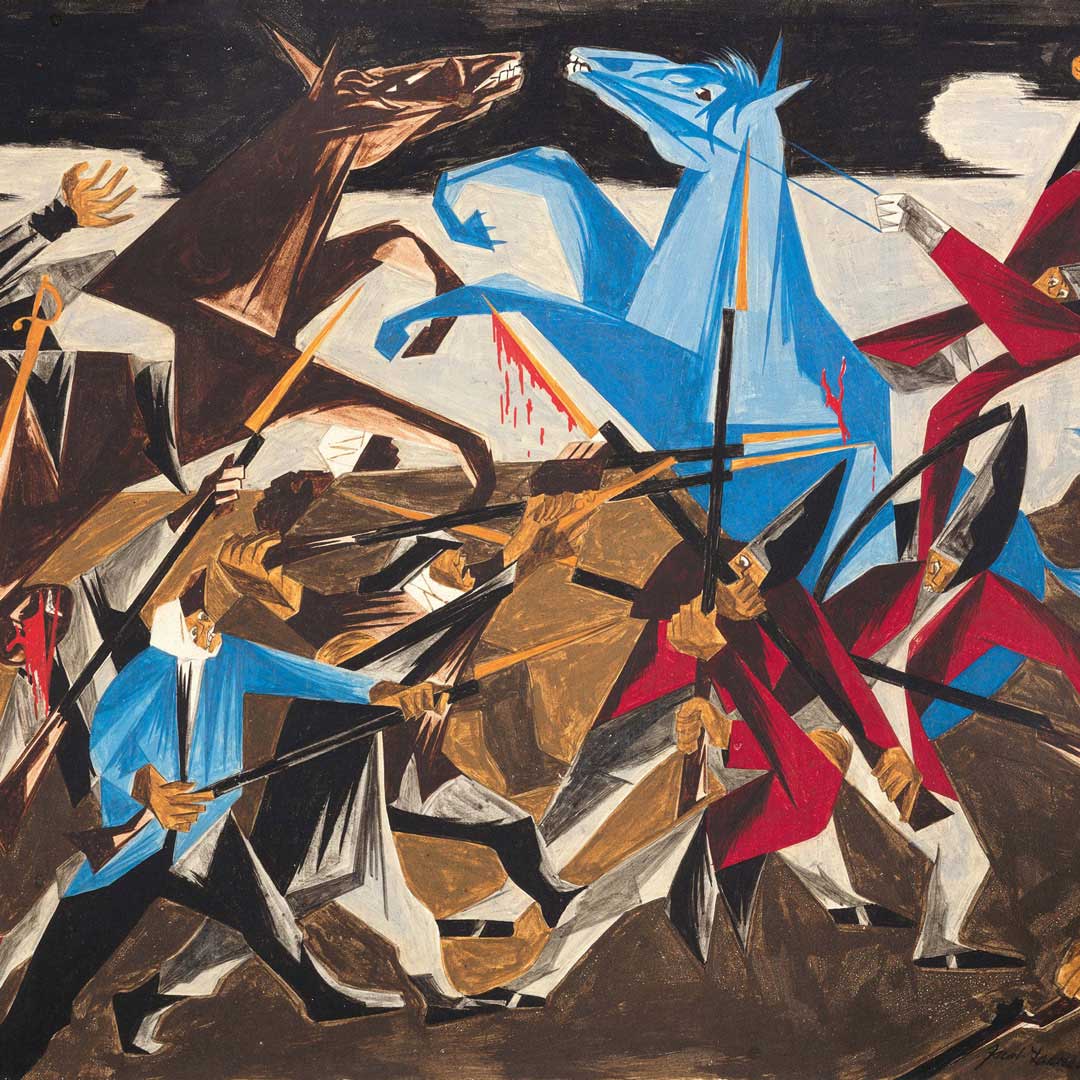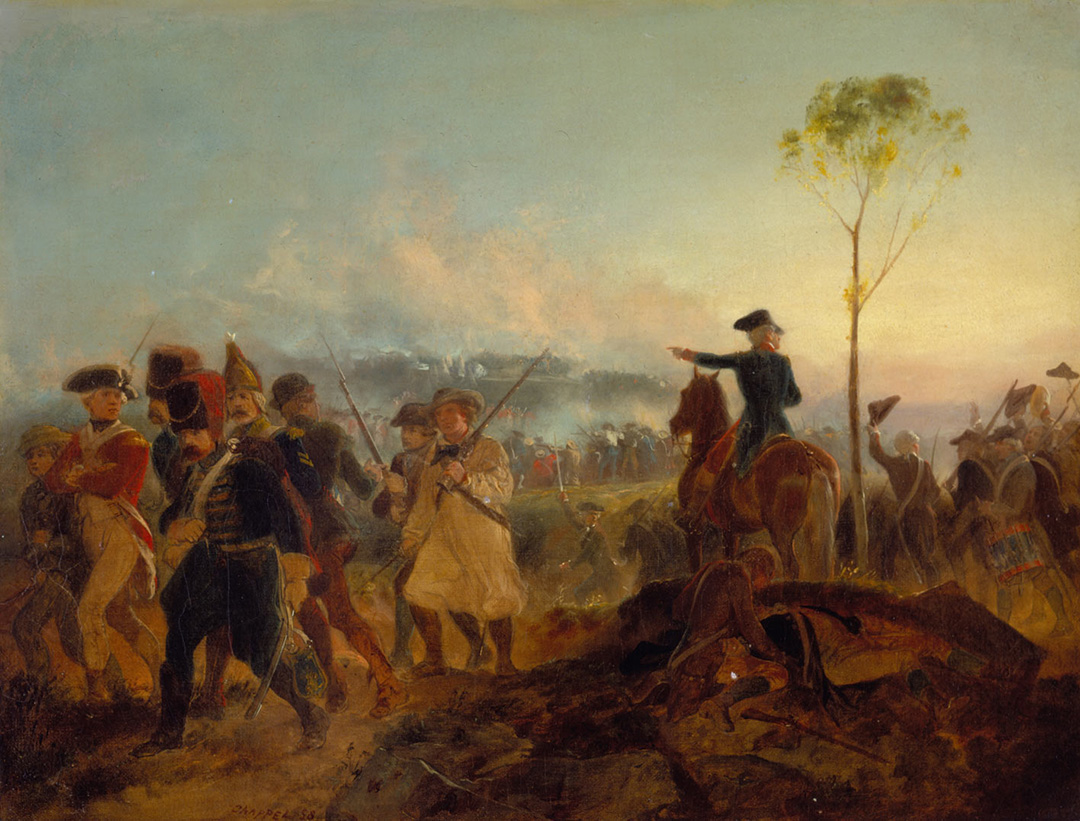
Panel 8
. . . again the rebels rushed furiously on our men. —a Hessian soldier, Panel 8, Inscription: No 10 RED COATS, 1954, Jacob Lawrence, from Struggle: From the History of the American People, 1954–56, Collection of Harvey and Harvey-Ann Ross, © 2019 The Jacob and Gwendolyn Knight Lawrence Foundation, Seattle / Artists Rights Society (ARS), New York.

